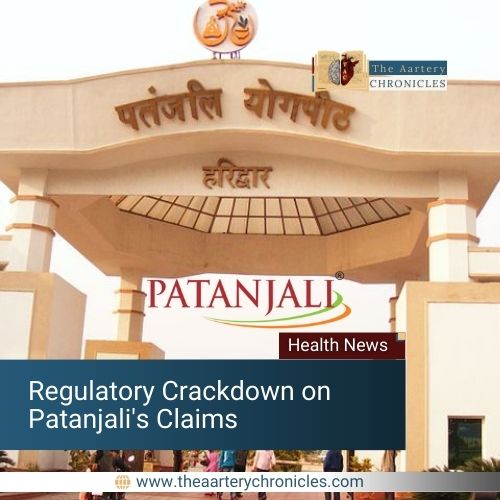

World Population Day 2025: India’s Population Growth and Its Global Significance
On World Population Day 2025, India finds itself at a crossroads in the global demographic landscape. With over 1.4 billion people, the largest population of any country in the world, India’s population is both a tremendous asset and a challenge. As the country progresses toward becoming the most populous nation, the decisions made in the coming years will have far-reaching implications not just for India but for the entire world.
Every year on July 11, the UN observes World Population Day to highlight the global population challenge. In this context, India’s demographic patterns, shaped by fast-growing population numbers, a large youth cohort, rising urbanization, and significant regional disparities, are pivotal in global debates surrounding sustainable development and population growth.
Theme of World Population Day 2025
On World Population Day 2025, observed on July 11, the global community is urged to reflect on both the opportunities and challenges posed by a rapidly growing population. With the global population surpassing 8.2 billion, this year’s theme, “Empowering young people to create the families they want in a fair and hopeful world,” stresses the essential need to empower the younger generation.
This theme, rooted in a promise made at the 1994 International Conference on Population and Development in Cairo, envisions a world where every individual — regardless of gender, location, or economic status — has the freedom to make informed choices about their future. These choices range from decisions about family size and timing to how one can lead a healthy, fulfilling life.
At its core, the theme also emphasizes equality, access to education, and healthcare, ensuring that young people have the support they need to build the life they dream of in a world that is fair, just, and safe. This year’s observance of World Population Day invites a global conversation about empowering youth to play an active role in shaping not only their own futures but also the future of the planet.
India’s Population Landscape in 2025: A Changing Dynamic
In India, the theme of World Population Day 2025 is especially relevant, given the country’s position as the most populous nation in the world, set to surpass China with a population of over 1.4 billion people by 2025. This rapid growth poses both opportunities and challenges for a country already grappling with deep inequalities, resource management issues, and climate change impacts.
The demographic situation in India can be understood through the following lenses:
1. A Youthful Population
India is home to a large and diverse youth population, with about half of the country’s population under the age of 25, making it one of the youngest nations globally. This youthful demographic provides a “demographic dividend,” which, if harnessed properly, can fuel the country’s economic growth for the coming decades. However, this also means India faces immense challenges in education, job creation, and healthcare.
2. Urbanization
Cities like Delhi, Mumbai, Bengaluru, and Kolkata are expanding at unprecedented rates, which puts pressure on infrastructure, housing, healthcare, sanitation, and transportation. As more people migrate to cities for better opportunities, urban planning and sustainability will be vital for managing growth.
3. Declining Fertility Rate
India’s fertility rate has decreased substantially over the past few decades, falling from 5.9 children per woman in the 1950s to an estimated 2.2 children per woman by 2025, approaching the replacement level. However, regional variations persist. States like Bihar, Uttar Pradesh, and Madhya Pradesh still have higher fertility rates compared to more developed regions like Kerala and Punjab, which have achieved below-replacement fertility rates.
4. Gender Imbalances
India’s fertility rate has decreased substantially over the past few decades, falling from 5.9 children per woman in the 1950s to an estimated 2.2 children per woman by 2025, approaching the replacement level. However, regional variations persist. States like Bihar, Uttar Pradesh, and Madhya Pradesh still have higher fertility rates compared to more developed regions like Kerala and Punjab, which have achieved below-replacement fertility rates.
Challenges Facing India’s Population Growth
1. Resource Strain
India’s population boom strains its already overburdened resources, especially in rural areas. With water scarcity becoming an urgent issue in many states, managing agriculture, electricity, and food security is critical. India also faces challenges related to air pollution, deforestation, and a high carbon footprint, which are exacerbated by population growth.
2. Youth Unemployment and Skills Gap
While India’s young population holds immense potential, there is a pressing need for job creation and skills development to keep pace with the growing workforce. According to various reports, India faces a skills mismatch where the education system does not always equip students with the necessary skills to thrive in a rapidly changing job market. This gap leaves many young people unemployed or underemployed. In the context of World Population Day 2025, empowering young people to make informed career choices will be crucial. By focusing on vocational training, digital literacy, and entrepreneurship, India can tap into its youthful energy to drive economic growth.
3. Health and Reproductive Rights
India is making strides in expanding access to family planning services, maternal healthcare, and contraception. However, unmet needs for family planning remain a significant challenge, especially in rural and underserved areas. The World Population Day 2025 theme highlights the need to empower young people with the knowledge and resources to make informed reproductive health choices. Programs like the National Family Planning Program and National Health Mission play a vital role in bridging these gaps. Ensuring universal access to reproductive health services is essential for managing population growth and improving overall well-being.
4. Regional Disparities
India’s population growth shows clear regional disparities, with significant variations across different states and areas. Northern and central states like Bihar, Uttar Pradesh, and Rajasthan continue to experience high fertility rates, while southern states like Kerala and Tamil Nadu have seen a decline in fertility rates and improved development outcomes. This regional imbalance poses challenges in terms of policy development, resource allocation, and ensuring equal opportunities for all citizens.
5. Access to Education and Gender Equality
Education plays a pivotal role in helping young people realize their full potential. For young girls, access to education is even more critical, as it empowers them to make informed choices about marriage, motherhood, and their futures. Gender equality remains a priority in India, and addressing gender-based violence, child marriage, and access to reproductive health will be key to achieving the goals set out in the Cairo Declaration. The Indian government’s initiatives to promote girls’ education and provide free education under the Right to Education Act are steps in the right direction. Still, there is much more to be done to ensure that all children, particularly girls from marginalized communities, have access to quality education.
The Way Forward: India’s Role in Sustainable Development
World Population Day 2025 highlights the dual nature of India’s demographic trends: while it presents an incredible opportunity to harness a young workforce, it also demands strategic planning to ensure that population growth does not outstrip the country’s ability to provide for its people sustainably.
In order to truly benefit from its demographic dividend, India must focus on areas such as:
- Strengthening family planning programs to ensure that the population stabilizes at a sustainable level.
- Empowering women through education, healthcare, and economic opportunities to address gender disparities.
- Harnessing technology and innovation to create new opportunities for employment and education.
- Building sustainable cities that can accommodate growing urban populations without causing environmental harm.
Conclusion
In conclusion, World Population Day 2025 is a moment for India to reflect on its demographic challenges and to renew its commitment to achieving sustainable development. With the right policies, investments, and focus on human capital, India can transform its population challenges into a force for global progress.
- All Have Right to Make Informed Choices, Secretary-General Says on World Population Day | Meetings Coverage and Press Releases
- India population, July 2025
- World Population Day | United Nations in India
- Notes_3484_M-SOCE-018 SOCIOLOGY OF POPULATION STUDIES UNIT-IV.pdf
- The implications of the growing population on human development in India









